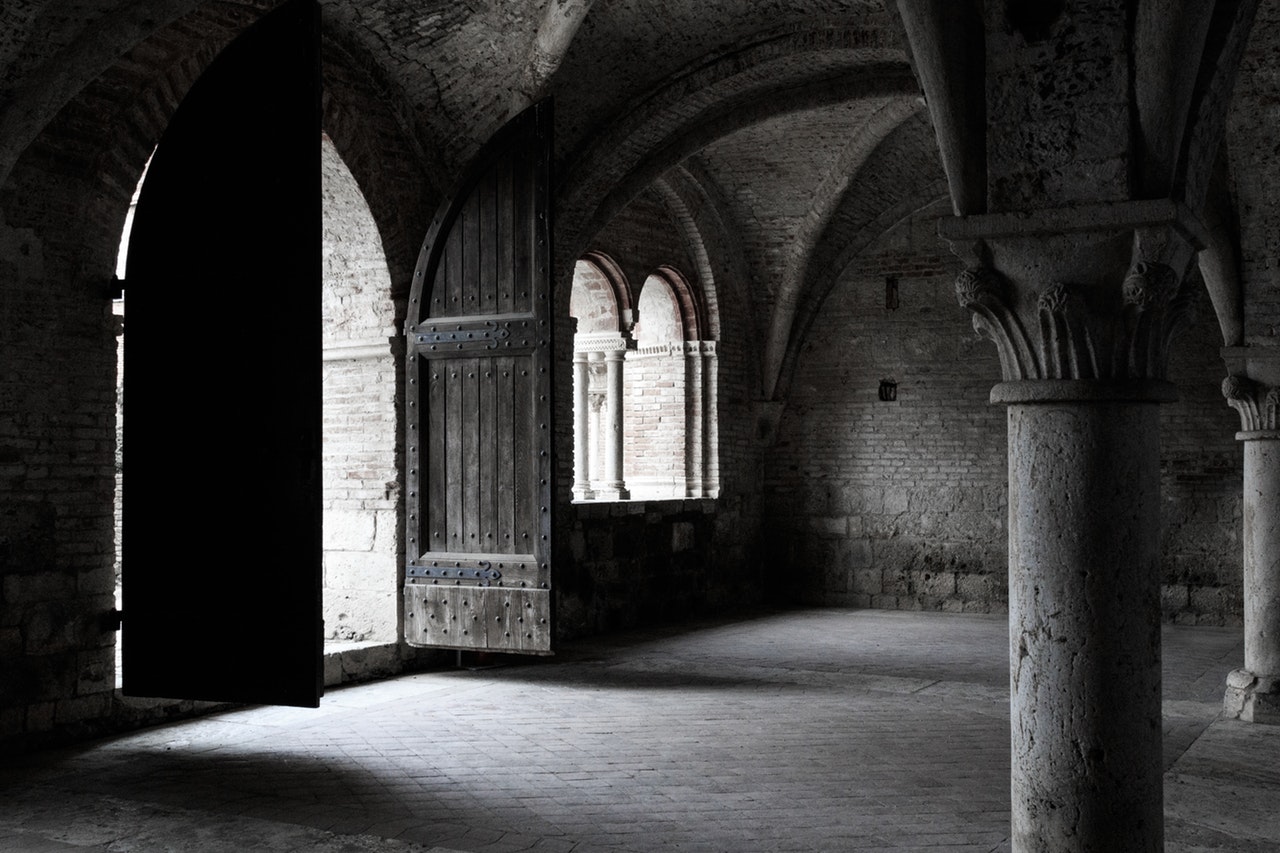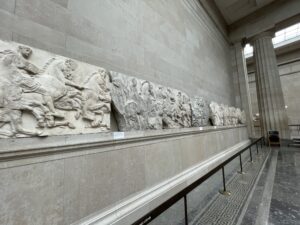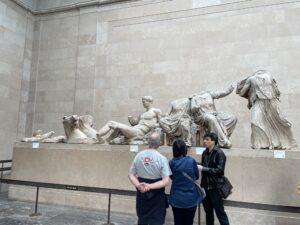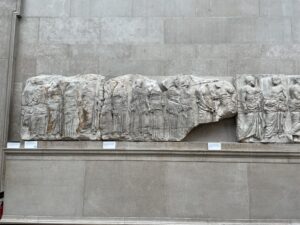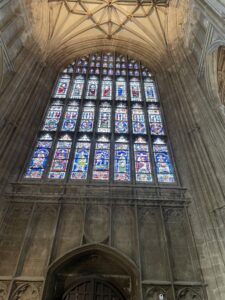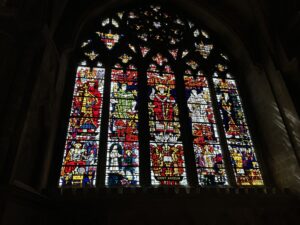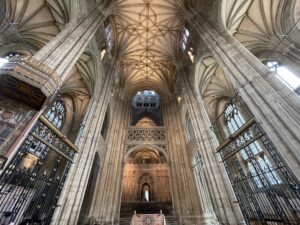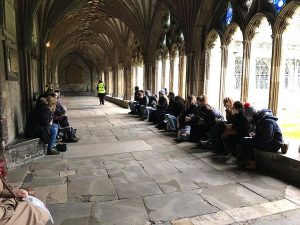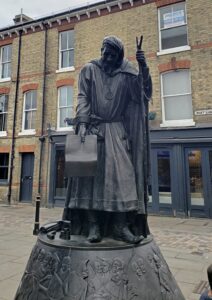
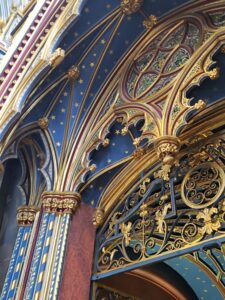
Whenever I hear that some famous person probably walked exactly where I am walking in museums, galleries, or restaurants, I have a hard time believing it. The linoleum floors look just as shiny as they did before and I feel no powerful presence left behind. As I walked up steps indented over time by hundreds of pilgrims wanting to see the Canterbury Cathedral for its miracles, I felt that presence. This was not the powerful presence of one, but many. People from all different backgrounds and all across Europe came to this one place, sometimes undergoing many trials. Some never arrived at all (I say that looking at Chaucer’s famous The Canterbury Tales—a text that I have read at least three times by now). I had achieved what Chaucer’s characters were unable to do and have left my mark on the stone that have already been eroded by so many before me. …And I’m just a wee English major.
While in England, we visited four amazing churches: the Manchester Cathedral, the York Minster, the Westminster Abbey, and, of course, the Canterbury Cathedral. Each one presented its unique charm and can easily be called marvels of medieval architecture. I held my breath entering each churches’ immense halls and was enamored by the history they held. Crypts and chapter houses presented something that was unlike anything I had seen before in churches. These churches are still in action today meaning people can come in for services, just like people hundreds of years ago would have.
As an art enthusiast and medieval fantasy writer, these churches were a feast for the eyes and imagination. Designed with Gothic aesthetics, they comprise of many small details. While waiting for friends or taking a break in an unsuspecting corner, I often found myself next to small carvings of dragons, flowers, and demons that would have been easily overlooked if I hadn’t stopped then and there. Since churches are built over the span of many years, the different aesthetics of the time shine through, making these structures the ultimate work of collaboration.
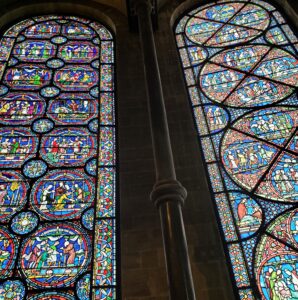
My favorite part when it comes to the designs of the churches however has to be the stained-glass windows. They are a dash of bright color, a symbol of light, and a story. No, really! This where the term “story” comes from when we refer to the height of buildings as stained-glass windows are meant to be read from the bottom to the top. It’s such a unique way of telling religious tales, regulating natural light, and honoring the creativity of artists at the time. I was particularly fascinated by the Great East Window depicting the Biblical story of creation at the York Minster which took ten years to renovate by 2018 (definitely worth it) and the Miracle Windows in the Canterbury Cathedral which depicts the many miracles of St. Thomas Becket. The latter windows display their stories in circles, which was unique from the other churches, and were in stunning condition. I am thankful to have been able to see these churches with such an amazing group for the creative inspiration they gave me and the history they held. Should you find yourself in England and wish to embrace your inner art/history enthusiast side, I highly recommend checking out a church. You never know what you’ll find!
Thank you for reading!
Teodora Buzea
